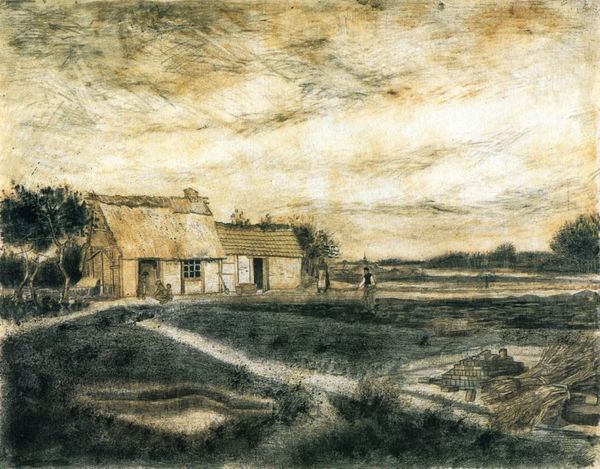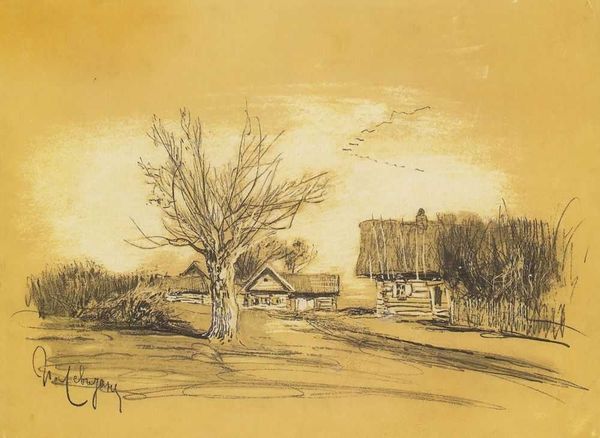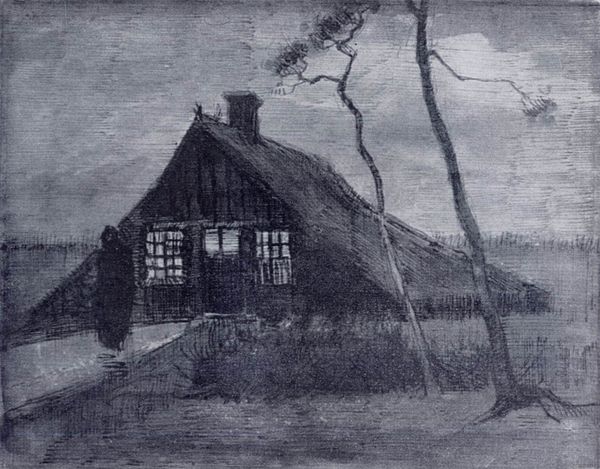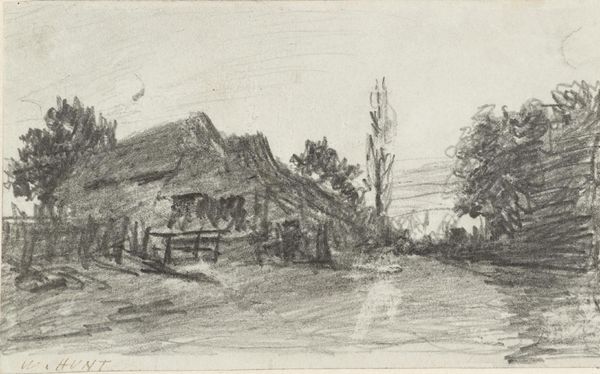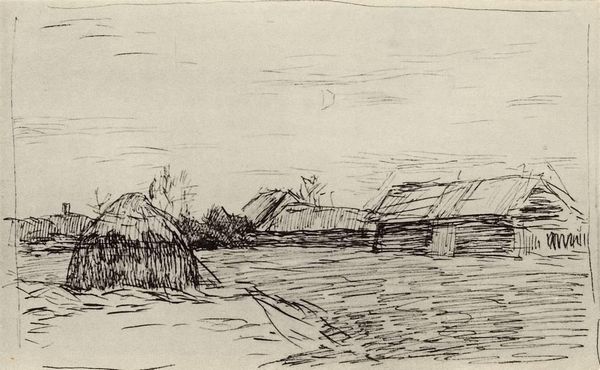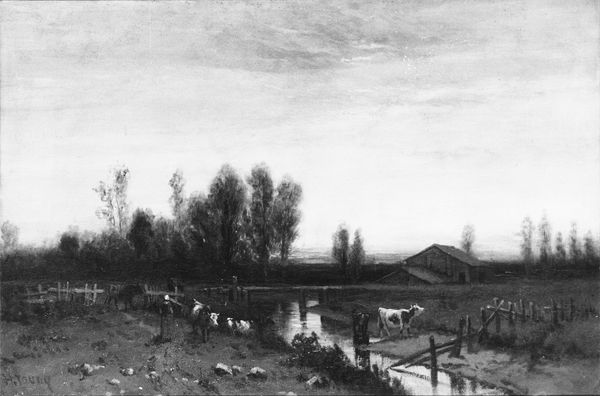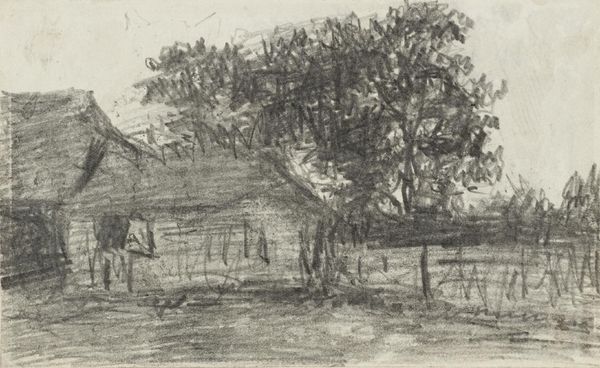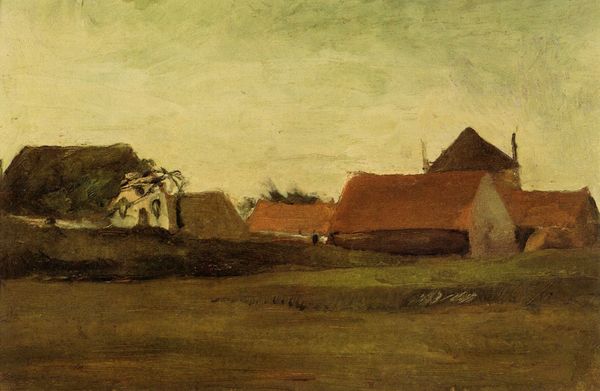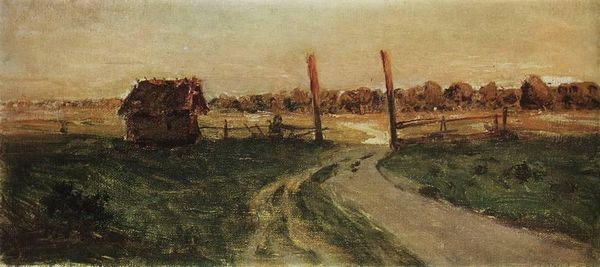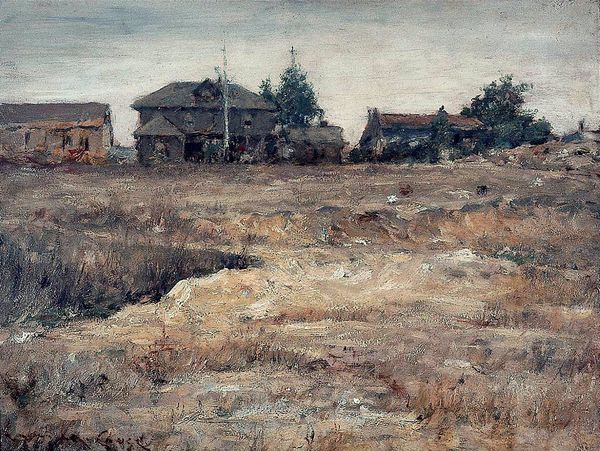
Dimensions: 60 x 90.5 cm
Copyright: Public domain
Editor: Levitan's "Moonlit Night. A Village", painted in 1897, rendered in oil, has such a serene quality. It almost feels like a stage set, with these quiet houses and dramatic shadows. What strikes you about it? Curator: It's interesting that you mention a stage set, because in the late 19th century, the rise of industrialization led to a fascination, even a romanticization, of rural life. How might Levitan be tapping into that sentiment here? What social messages can you read in the artist's choice to portray rural villages with such reverence, especially at the dawn of the 20th century? Editor: That’s interesting. Perhaps it's a subtle commentary on the disappearing traditions in the face of modernity, immortalizing this way of life. But it also seems very…stark. Curator: Exactly. Consider also that art institutions in Russia were just beginning to grapple with how to represent Russian identity, specifically its ties to rural spaces, but for whom? The peasant class, or those in the Academy? What effect do you think paintings like this had on solidifying a sense of national pride? Was there a specific audience Levitan was hoping to attract with "Moonlit Night"? Editor: I see. Maybe he wasn't just depicting a scene but also participating in constructing this national image. I hadn't really considered how images can play that sort of social role. Curator: The artist is then no longer solely someone creating aesthetics, but an active player in politics, right? Reflecting, shaping, maybe even manipulating our understanding of culture through visual representations. And remember to consider art market trends for that social group that might want paintings of the ‘motherland’ in their collection! Editor: I suppose I had underestimated the artist’s relationship to the world they depict. It definitely gave me something to think about for our upcoming assignment. Curator: Likewise. Analyzing these details gives me an avenue for considering what the modern patron of the Russian "national school" was purchasing, a piece of the Russian "national" identity for themselves? Interesting question.
Comments
No comments
Be the first to comment and join the conversation on the ultimate creative platform.
